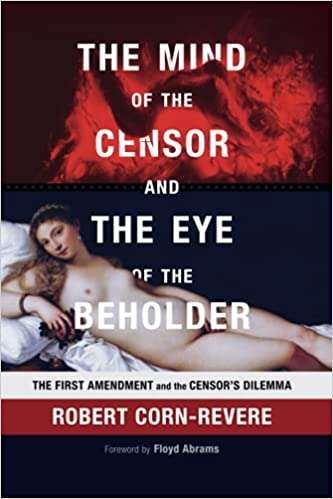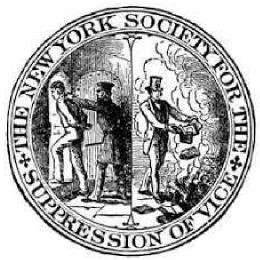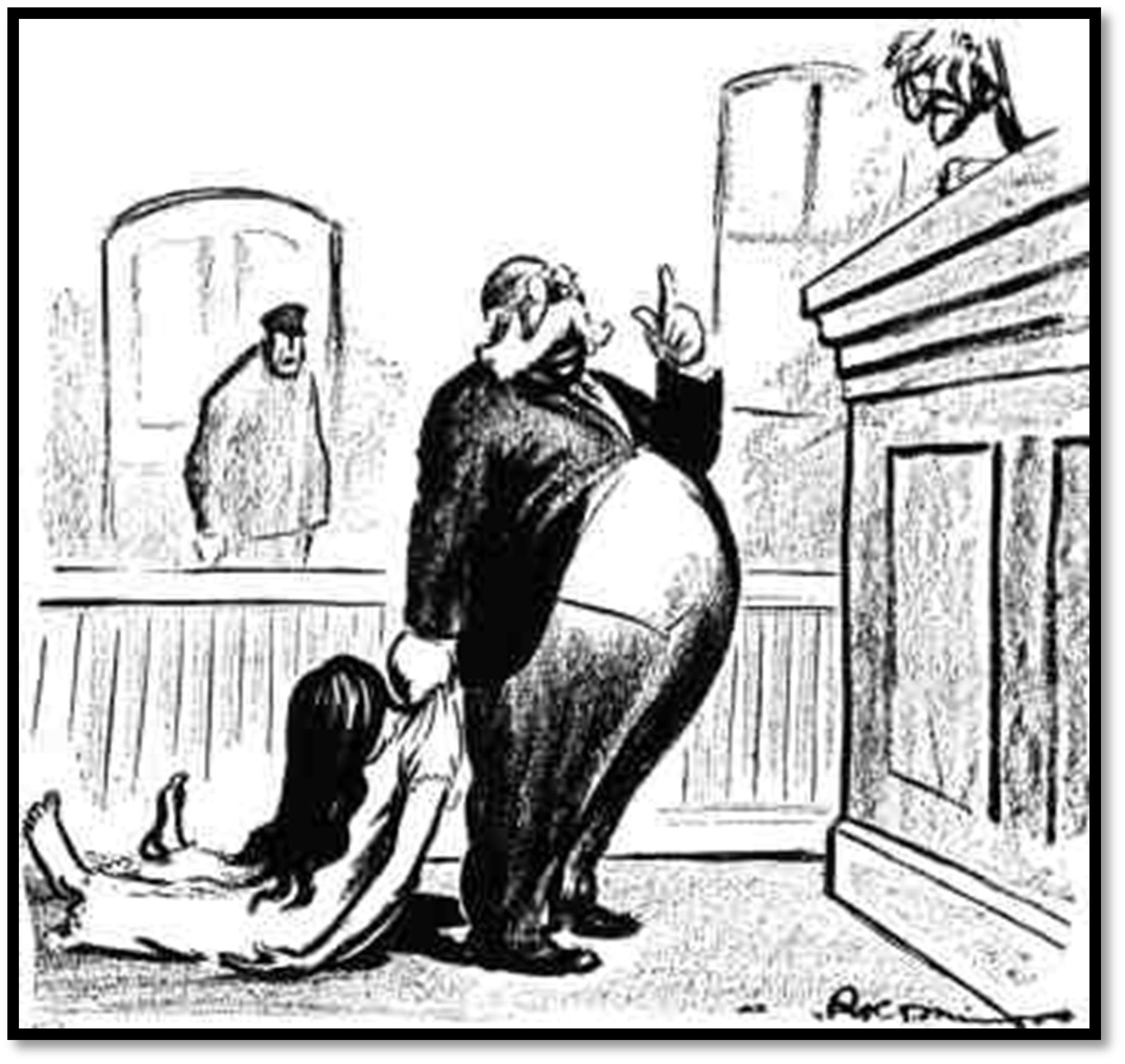The Volokh Conspiracy
Mostly law professors | Sometimes contrarian | Often libertarian | Always independent
The Return of Anthony Comstock, Part 1: The Prodigal Censor
Anthony Comstock has been dead for 106 years and is largely forgotten, but lately he is having quite the comeback. Comstock, America's most notorious anti-vice crusader of the late-nineteenth and early twentieth centuries, is the subject of several recent books, is featured as the villain in a feminist novel, and—oh, yes—his arguments for censorship and his tactics are being recycled by new generations of anti-free speech activists. So, who was Comstock and why does this matter?
The Copernicus of a new art and science
He was, more than all others before or after his time, the overlord of vice chasers. With religious fervor, he crusaded mightily against any and all forms of what he saw as moral depravity, especially in matters concerning sex. In the process, Comstock did two things: He launched a "culture war" over impurity in the minds and deeds of Americans, and he changed the face of American law by stewarding a sweeping obscenity bill that he enforced personally. His war thrived in his lifetime and continued on long after his death.
In his time, Comstock literally defined the profession of anti-smut activist. H.L. Mencken dubbed him "the Copernicus of a quite new art and science," and one "who first capitalized moral endeavor like baseball or the soap business, and made himself the first of its kept professors."
Through his knack for self-promotion, Comstock was a national celebrity whose exploits were followed in the press as avidly as showman P.T. Barnum and boxing champ John L. Sullivan. He was "the best known of the urban vice fighters of his day" and "the foremost policeman of private vices in America's Gilded Age." Harper's Weekly noted that the name Anthony Comstock is known not just "all over the country," but "over most of the civilized world."
He headed the New York Society for the Suppression of Vice and was a special agent for the U.S. Post Office under a federal law that infamously bore his name. Comstock terrorized writers, publishers, free thinkers, birth control advocates, and artists—jailing thousands and driving at least 15 to suicide. Near the end of his long career, Comstock claimed to have convicted enough people "to fill a passenger train of sixty-one coaches, sixty coaches containing sixty passengers each and the sixty-first almost full." He also said he had destroyed 160 tons of obscene literature and four million pictures.
Official seal of the New York Society for the Suppression of Vice
Arguably, no one before or since has affected American culture so profoundly. Most states followed the lead of federal law based on reform movements led or inspired by Comstock. Art historian Amy Werbel aptly observed that his literary preferences "served for forty years as the national line between virtue and vice."
Comstock's law applied to all that was obscene, lewd, or lascivious. It also applied to anything intended for the prevention of conception or for procuring an abortion, or anything "intended or adapted for any indecent or immoral use." Everything that Comstock considered immoral was (by definition) obscene, and therefore illegal.
His concept of immorality cast a wide net. In addition to "pornography," it included blasphemy, sensational novels, news stories, art, and even scientific and medical texts. Comstock considered the danger of "evil reading" to be worse than yellow fever or small pox, which is to say, Comstock considered sex to be worse than deadly diseases. Why? Because he saw sex (and the lure of masturbation—and therefore eternal damnation) in everything.
This risk even lay hidden as a trap for the young in newspaper accounts of crime or in stories about public speeches given by freethinkers. Such works should be seized and destroyed, Comstock wrote, lest the stories breed "scoffers" of "the sweet influences of religion." As with everything in Comstock's mind, it all came back to sex: "Remove the thought of the certainty of a final judgment or the existence of God from the mind of many youth, and you will have a bid for a life of self-gratification and sin."
When he died in 1915, just days after his successful prosecution of William Sanger for handing out one of his wife's pamphlets on birth control, the press lionized Comstock as a fallen "soldier of righteousness." The New York Times ran a front-page obituary describing Comstock as a person "known the world over through the controversies that have followed his crusades against books, pictures and plays that he deemed indecent." The Times praised him editorially as a "benefactor and hero" who "served a good cause with tireless devotion," while the New York World called him "the most spectacular crusader against vice that America has known."
Yet even at the height of his powers, the heavy-set crusader with mutton-chop sideburns was the butt of public ridicule. George Bernard Shaw popularized the term "Comstockery" to mock the unique blend of militant sanctimony and fascination with the lurid that marks American prudishness. Comstock frequently was lampooned in illustrated comics, and in his final days, even his supporters distanced themselves from his excessive zeal.
His vociferous campaigns, such as the one against the New York Art Students' League in 1906, or his tirade against belly dancers on the Midway Plaisance of the 1893 Chicago World's Fair, made him a frequent target of political cartoonists, and his face became the buffoonish image of censorship.
Planned Parenthood founder Margaret Sanger wrote "[t]here is nothing which causes so much laughter or calls forth so many joking comments by people in Europe as Comstockery in America." Easy for her to say: she penned those words while safe in England at a time when her husband faced trial in America for handing out one of her pamphlets. But as Comstock's power to inflict punishment waned and eventually disappeared, the clownish aspects of his crusade were what people remembered.
Your Honor, this woman gave birth to a naked child!
[Cartoon from The Masses, September 1915.]
Even in his lifetime, Comstock became "a myth, a symbol, a personified reductio ad absurdum," wrote John Collier, a co-founder of the National Board of Censorship (which advocated for "voluntary" censorship of motion pictures at the time). Upon Comstock's death in 1915, Collier wrote that the great crusader was "the whipping boy of present day public opinion." For most who still remember him, Comstock continues to perform that role. Free speech advocate Marjorie Heins has observed that "the historical image of Anthony Comstock is more comic than threatening."
But it wasn't just Comstock's image that became tarnished over the years. The legal foundations of his censorship efforts crumbled as twentieth century courts interpreted the First Amendment and developed robust protections for freedom of speech. And Comstock helped drive the erosion. His dogmatic and inflexible insistence that the government has a divine mandate to censor anything even remotely related to sex forced free speech advocates to sharpen their constitutional reasoning for extending First Amendment protection to the subject. Although it took decades, those arguments eventually prevailed in lower courts, and finally in the U.S. Supreme Court.
Even a sympathetic biographer observed that all the legal gains have been completely reversed in virtually every endeavor that occupied Comstock's long career—from trying to outlaw most discussions or depictions of sex, his opposition to contraceptives and abortion, and his horror at the notion of "modern marriage."
If Comstock could be revived and transported from the grave to today's America, the biographer wrote, the old crusader would find his worst fears confirmed and he would conclude "that he now stood in a very different country" in which courts and legislatures "have already given their blessings to fornication, adultery, pornography, contraception, easy divorce, abortion, and sodomy." It is easy to imagine that Comstock's head would explode at the mere mention of gay marriage.
Perhaps the worst fate that befell Comstock was obscurity. The man who had craved the world's attention from the beginnings of his holy crusade right through to its end was in danger of becoming a historical footnote.
[This post is based on the new book, The Mind of the Censor and the Eye of the Beholder: The First Amendment and the Censor's Dilemma.]



Show Comments (11)